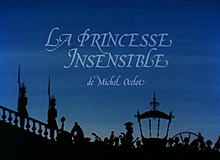
A fairy tale is a short story that belongs to the folklore genre. Such stories typically feature magic, enchantments, and mythical or fanciful beings. In most cultures, there is no clear line separating myth from folk or fairy tale; all these together form the literature of preliterate societies. Fairy tales may be distinguished from other folk narratives such as legends and explicit moral tales, including beast fables. Prevalent elements include dwarfs, dragons, elves, fairies, giants, gnomes, goblins, griffins, mermaids, talking animals, trolls, unicorns, monsters, witches, wizards, and magic and enchantments.

Sleeping Beauty, also titled in English as The Sleeping Beauty in the Woods, is a fairy tale about a princess cursed by an evil fairy to sleep for a hundred years before being awakened by a handsome prince. A good fairy, knowing the princess would be frightened if alone when she wakes, uses her wand to put every living person and animal in the palace and forest asleep, to awaken when the princess does.

Anne Claude de Tubières-Grimoard de Pestels de Lévis, comte de Caylus, marquis d'Esternay, baron de Bransac, was a French antiquarian, proto-archaeologist and man of letters.

Marie-Catherine Le Jumel de Barneville, Baroness d'Aulnoy, also known as Countess d'Aulnoy, was a French author known for her literary fairy tales. When she termed her works contes de fées, she originated the term that is now generally used for the genre.

Fantasyland is one of the "themed lands" at all of the Magic Kingdom-style parks run by The Walt Disney Company around the world. It is themed after Disney's animated fairy tale feature films. Each Fantasyland has a castle, as well as several gentle rides themed after those Disney animated feature films.
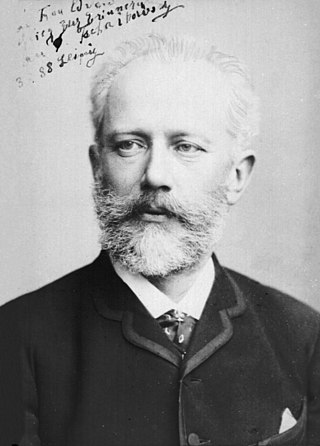
The Sleeping Beauty is a ballet in a prologue and three acts to music by Pyotr Ilyich Tchaikovsky, his Opus 66, completed in 1889. It is the second of his three ballets and, at 160 minutes, his second-longest work in any genre. The original scenario was by Ivan Vsevolozhsky after Perrault's La belle au bois dormant, or The Beauty Sleeping in the Forest; the first choreographer was Marius Petipa. The premiere took place at the Mariinsky Theatre in St. Petersburg on January 15, 1890, and from that year forward The Sleeping Beauty has remained one of the most famous of all ballets.
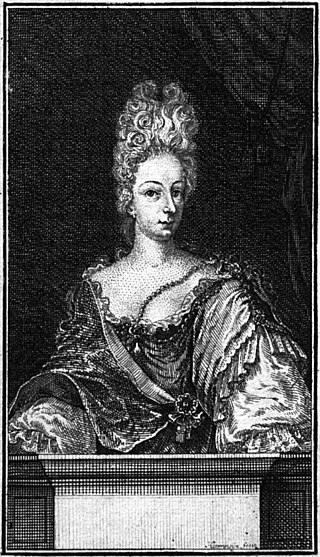
Henriette-Julie de Murat was an aristocratic French writer of the late 17th century, associated with the Baroque Précieuses movement.
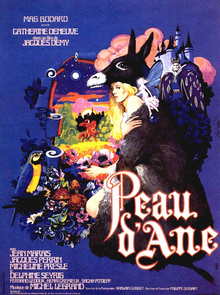
Donkey Skin is a 1970 French musical fantasy comedy film directed by Jacques Demy, based on Donkeyskin, a 1695 fairy tale by Charles Perrault about a king who wishes to marry his own daughter. It stars Catherine Deneuve and Jean Marais, with music by Michel Legrand. Donkey Skin proved to be Demy's biggest success in France, with a total of 2,198,576 tickets sold.

Cendrillon (Cinderella) is an opera—described as a "fairy tale"—in four acts by Jules Massenet to a French libretto by Henri Caïn based on Perrault's 1698 version of the Cinderella fairy tale.
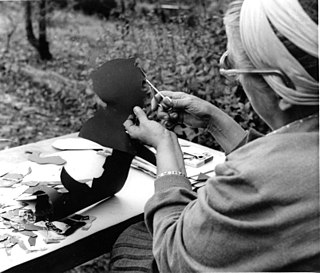
Silhouette animation is animation in which the characters are only visible as black silhouettes. This is usually accomplished by backlighting articulated cardboard cut-outs, though other methods exist. It is partially inspired by, but for a number of reasons technically distinct from, shadow play.

Michel Ocelot is a French writer, designer, storyboard artist and director of animated films and television programs and a former president of the International Animated Film Association. Though best known for his 1998 debut feature Kirikou and the Sorceress, his earlier films and television work had already won Césars and British Academy Film Awards among others and he was made a chevalier of the Légion d'honneur on 23 October 2009, presented to him by Agnès Varda who had been promoted to commandeur earlier the same year. In 2015 he got the Lifetime Achievement Award at the World Festival of Animated Film - Animafest Zagreb.
French folklore encompasses the fables, folklore, fairy tales and legends of the French people.

Azur & Asmar: The Princes' Quest is a 2006 French-Spanish-Belgian-Italian computer-animated fairytale fantasy film written and directed by Michel Ocelot and animated at the Paris animation and visual effects studio Mac Guff Ligne. It was released in theaters in North America as just Azur & Asmar.

Ciné si is a 1989 French silhouette animation television series conceived, written and directed by Michel Ocelot and realised at La Fabrique, consisting of short fairy tale and retrofuture stories performed by the same animated "actors". A critical success but commercial failure at the time, no further episodes were commissioned beyond the initial eight but following the success of Ocelot's Kirikou and the Sorceress six were edited into the 2000 compilation movie Princes et Princesses, in which form they finally saw wide exposure and acclaim both in France and internationally; a further episode was included in a home release of short works in 2008 but one remains unavailable for public consumption.

Tales of the Night is a 1992 French silhouette animation television special written and directed by Michel Ocelot. It aired on Canal+ in France, ZDF in Germany and Channel 4 in the United Kingdom. It is a trilogy of three further fairy tales in much the same format as Ciné si.
Dragons et Princesses is a 2010 French computer animation television program written, storyboarded and directed by Michel Ocelot and produced at Studio O for Canal+. It is a fairy tale anthology series of ten further 13-minute episodes in the format established in Ciné si, though made in computer animation rendered in a silhouette instead of traditional silhouette animation made with backlit cut-outs. Five of the episodes are edited, with a feature-exclusive sixth, into the 2011 stereoscopic compilation movie Tales of the Night.

Princes et Princesses is a 2000 compilation film by French animator Michel Ocelot.

Tales of the Night is a 2011 French computer silhouette animation feature film directed by Michel Ocelot. It is a compilation movie for movie theaters of five episodes of Dragons et Princesses in stereoscopic 3D and one additional, until then unseen story, "The Girl-Doe and the Architect's Son", for a total of six. It premièred in competition for the Golden Bear at the 61st Berlin International Film Festival on February 13, 2011 before its general release in France by StudioCanal on July 20.
Marguerite de Lubert or Marie-Madeleine de Lubert was a French woman of letters.

La Princesse de Trébizonde is an opéra bouffe with music by Jacques Offenbach and text by Étienne Tréfeu and Charles-Louis-Étienne Nuitter. The work was first given in two acts at the Theater Baden-Baden on 31 July 1869 and subsequently presented in a revised three-act version at the Théâtre des Bouffes-Parisiens on 7 December of the same year.
